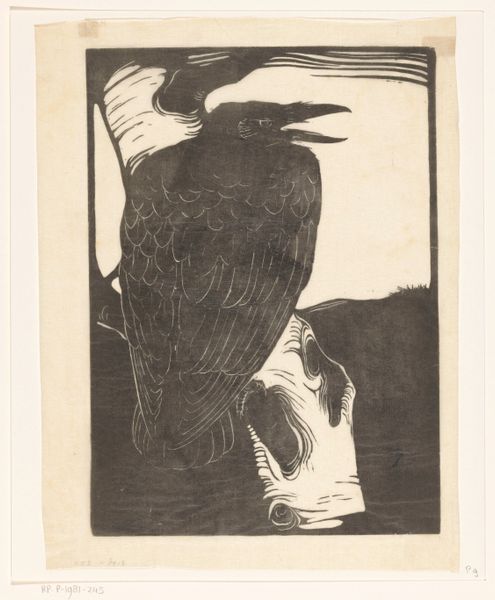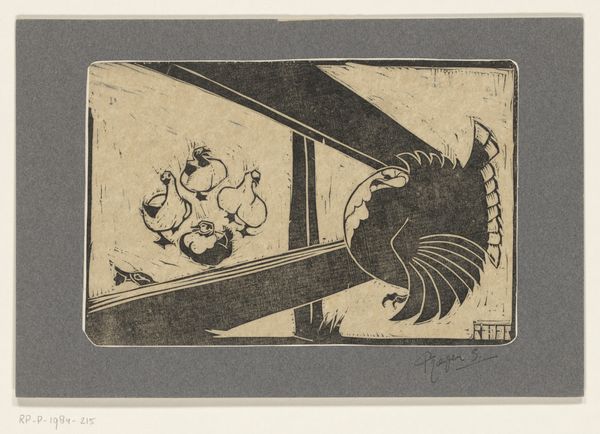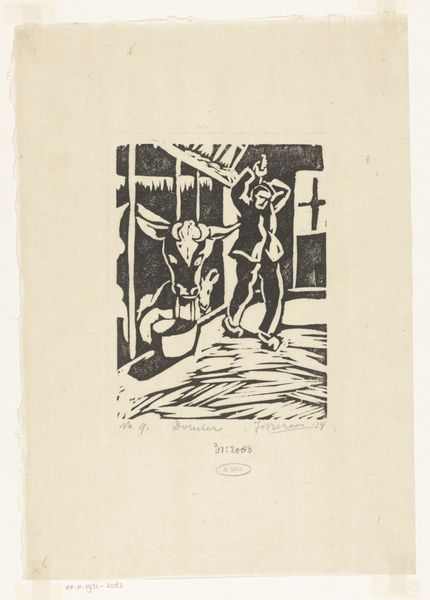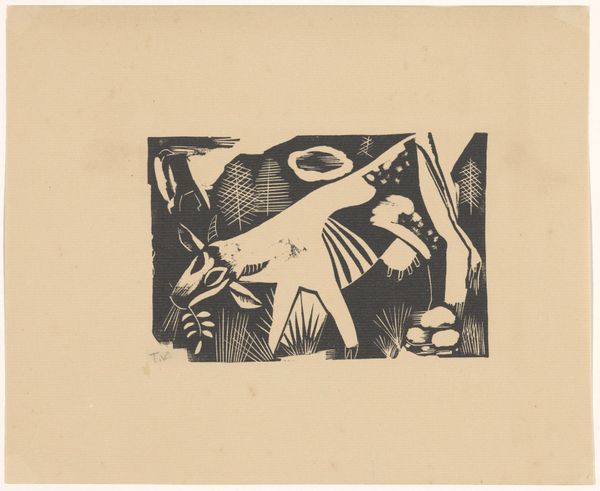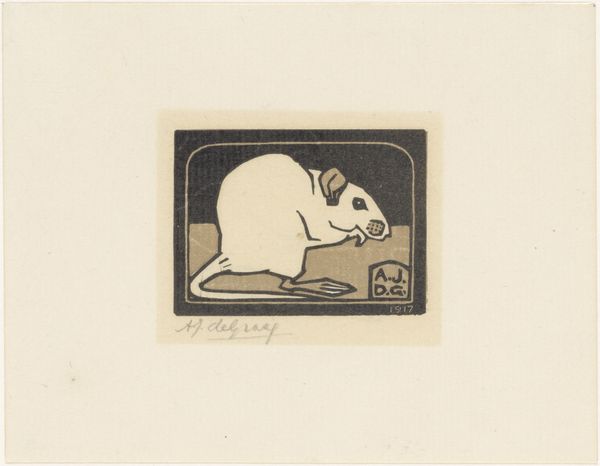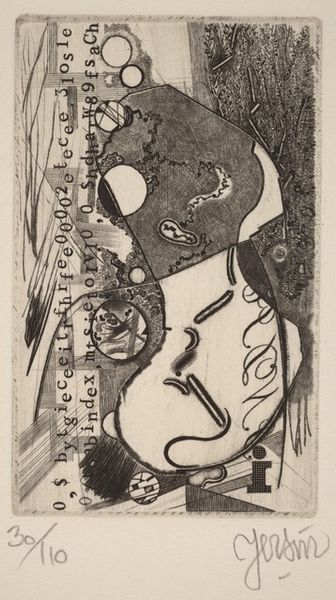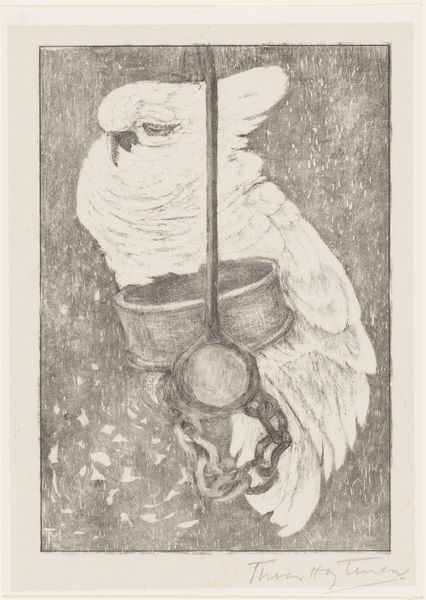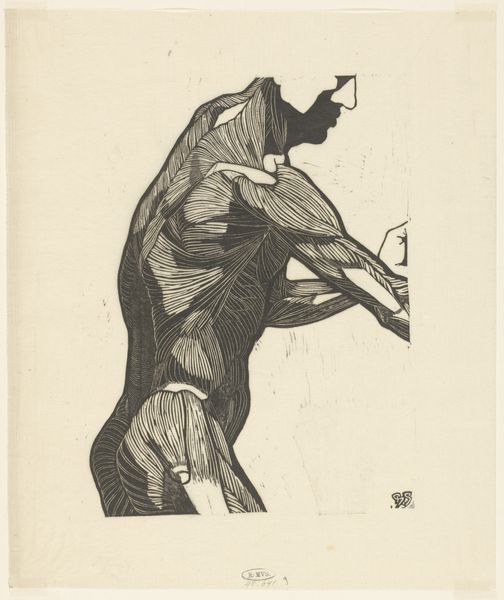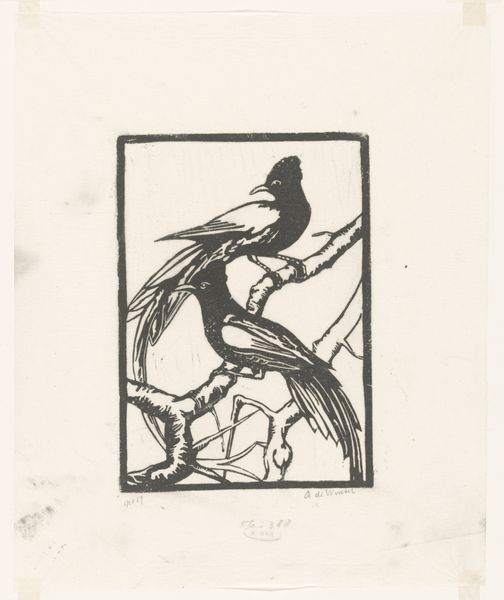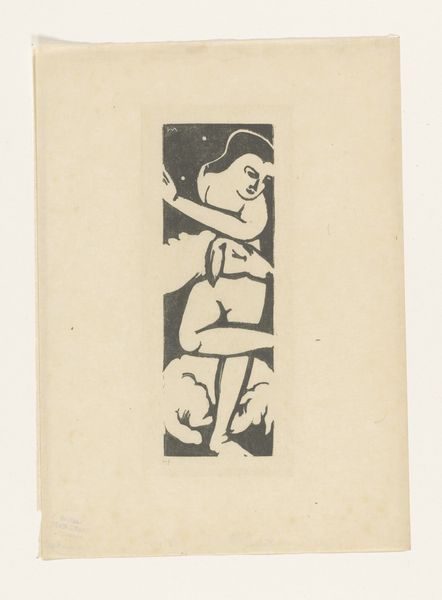
print, woodcut
#
animal
# print
#
caricature
#
caricature
#
figuration
#
woodcut
#
symbolism
Dimensions: height 116 mm, width 90 mm
Copyright: Rijks Museum: Open Domain
Editor: We’re looking at "Pappie (Schreeuwende kaketoe)"—"Daddy (Screaming Cockatoo)"—a woodcut by Samuel Jessurun de Mesquita, circa 1900-1918. It’s quite striking, the stark contrast and how the bird seems trapped within that heavy frame. What do you see in this piece, focusing on its visual construction? Curator: The work's strength resides in its formal elements. The stark black and white contrast, typical of woodcut, creates immediate visual tension. Observe the dynamism implied by the diagonal of the branch bisecting the rectangular frame; this formal rupture unsettles the composition and injects instability. How do you interpret the bird’s placement within this frame? Editor: I see that now; it feels unbalanced. It’s like the frame is a cage, but also constricting the view. Do you think that asymmetry contributes to the feeling that the cockatoo is screaming? Curator: Precisely. The aggressive diagonal combined with the implied sound—indicated by the title and the open beak—culminates in a sensation of contained, yet unbridled expression. The visual weight is cleverly distributed; the density of black in the upper right wing counterbalances the bird's body, which in turn prevents the image from tilting, literally or figuratively. Editor: That’s fascinating. I was so focused on the subject that I missed how the artist carefully balanced the visual weight. Curator: It is in this interplay of line, form, and implied action, rendered with a symbolic approach characteristic of the period, that the piece derives its evocative power. Mesquita coaxes meaning from the most economical of means. What new appreciation do you have for it now? Editor: I now notice how carefully constructed and purposeful it all is, which enriches how I now perceive the cockatoo. Thanks. Curator: It's rewarding when analyzing structural choices helps you realize and feel more.
Comments
No comments
Be the first to comment and join the conversation on the ultimate creative platform.
